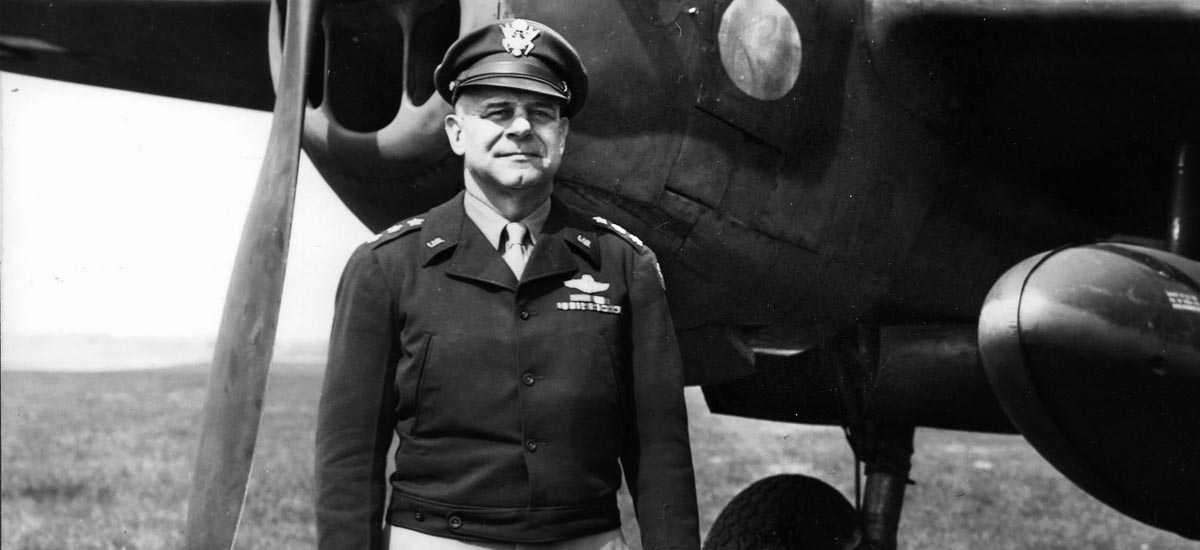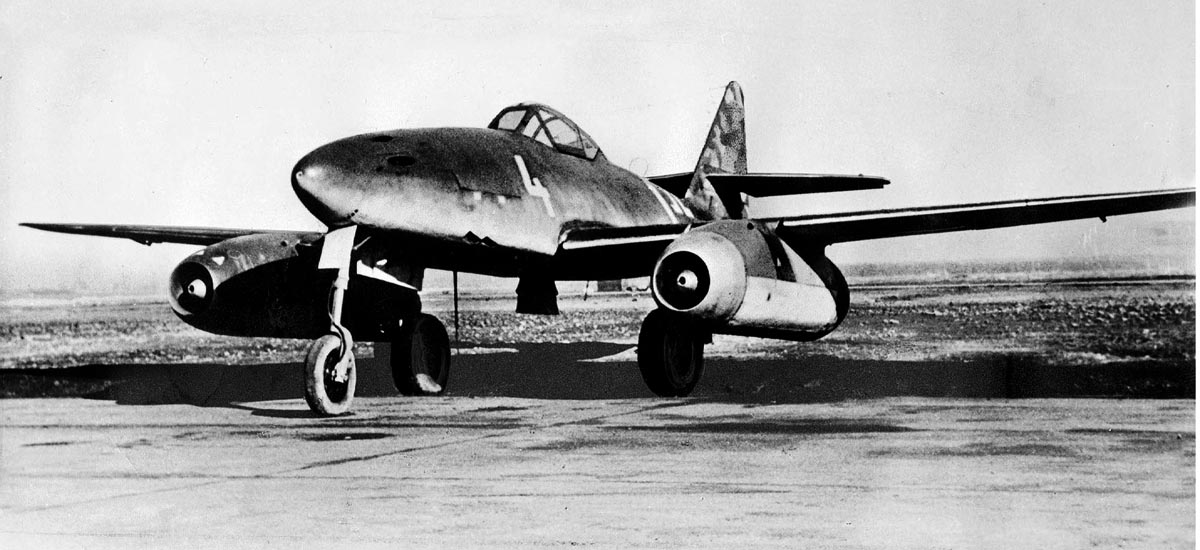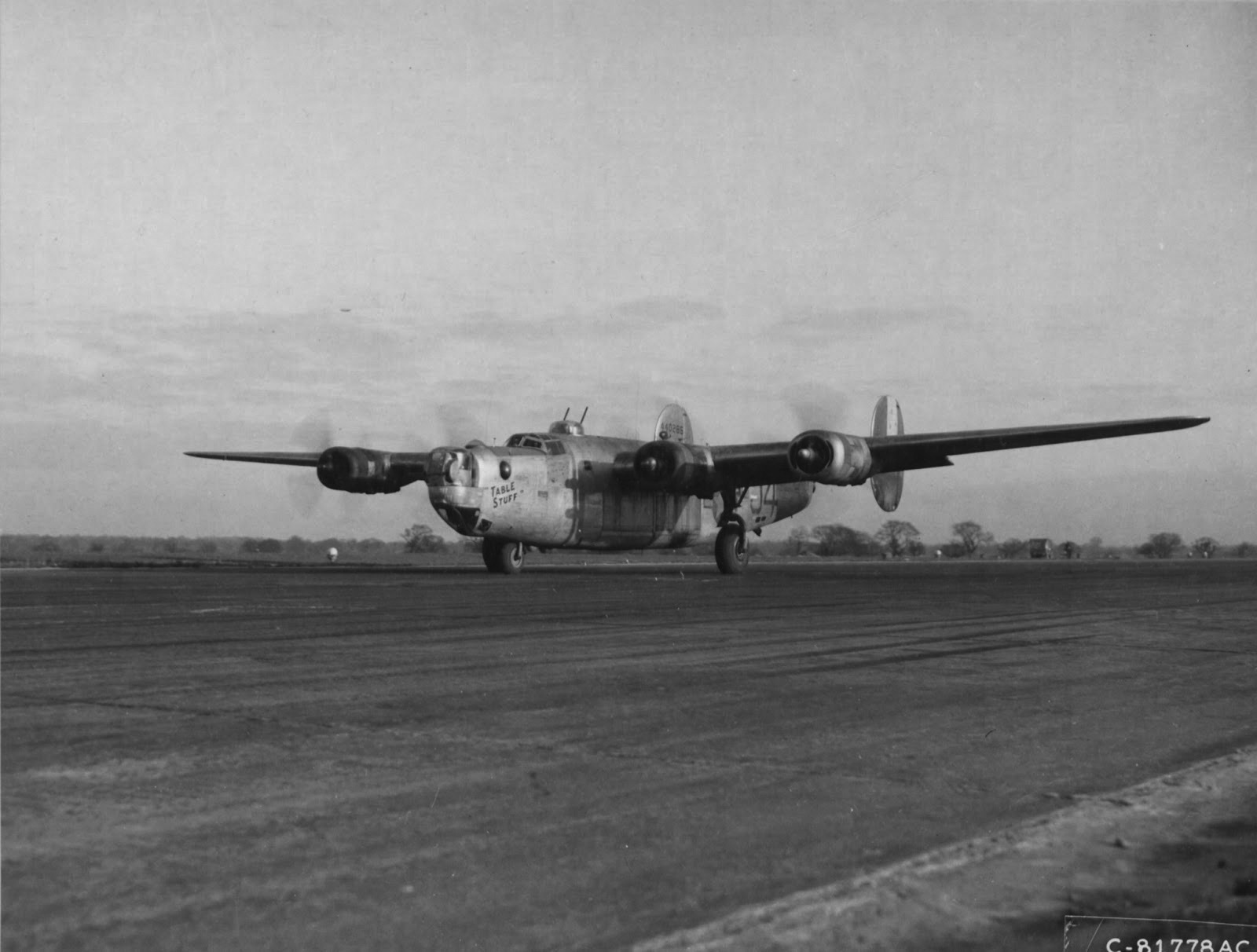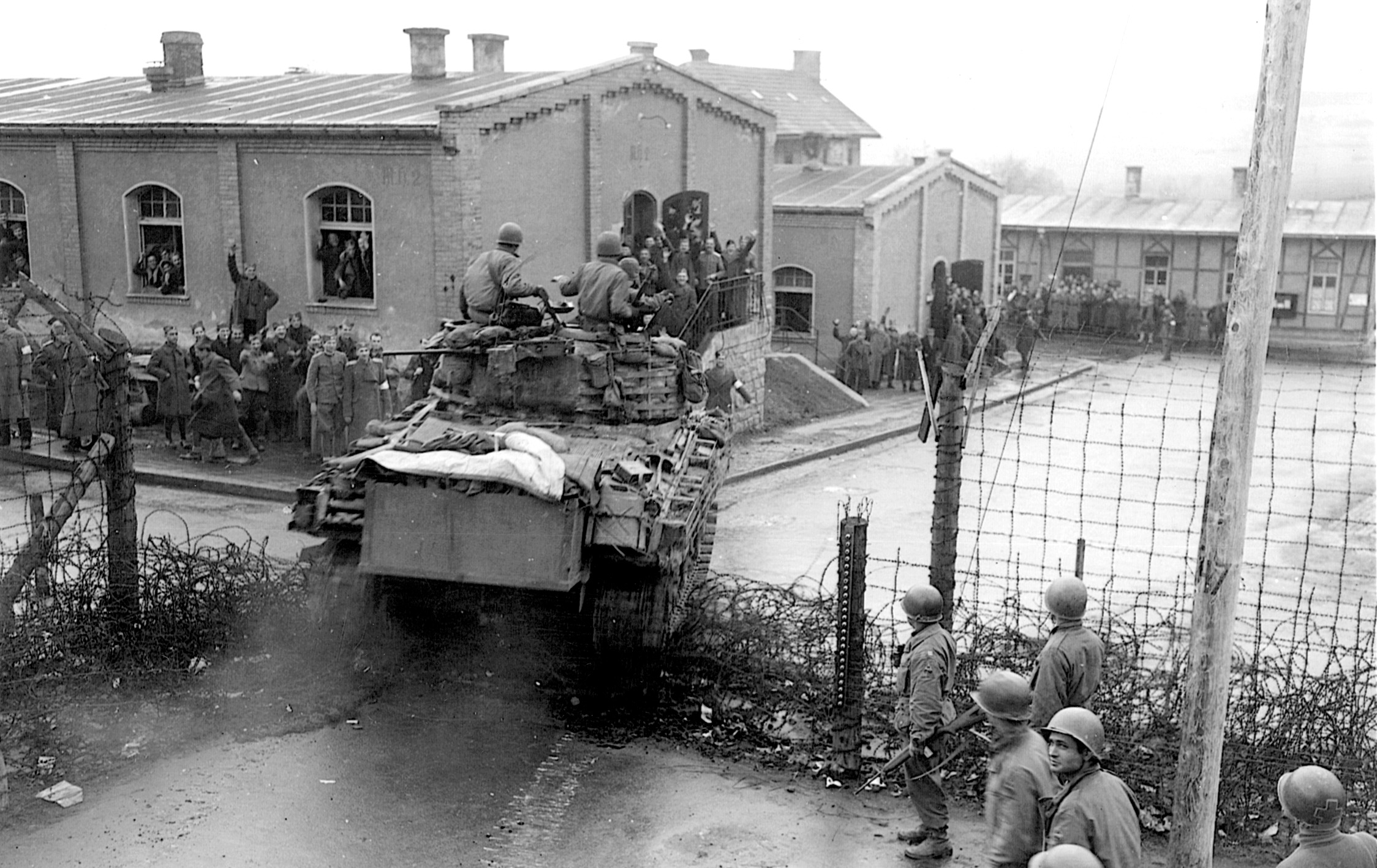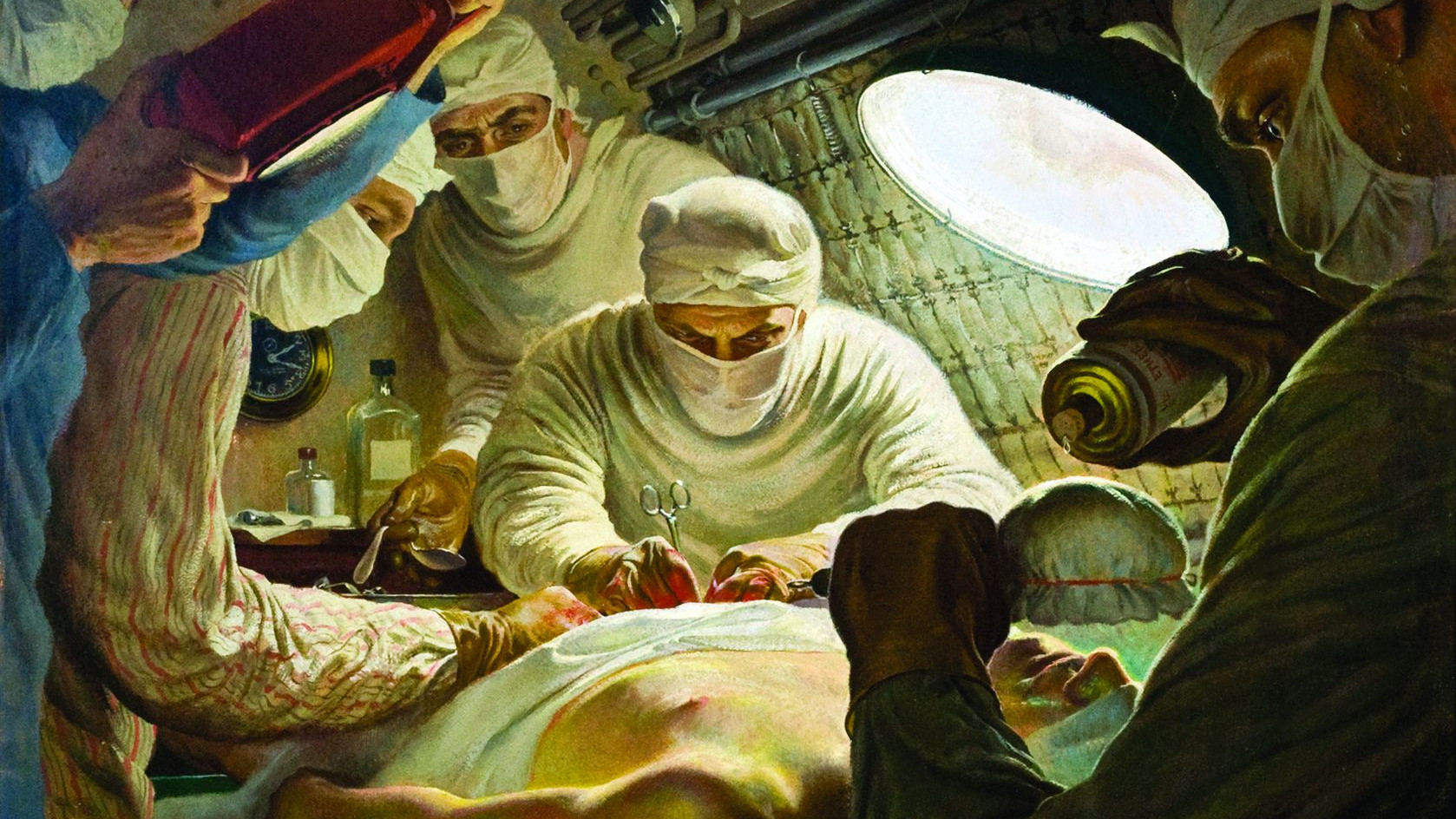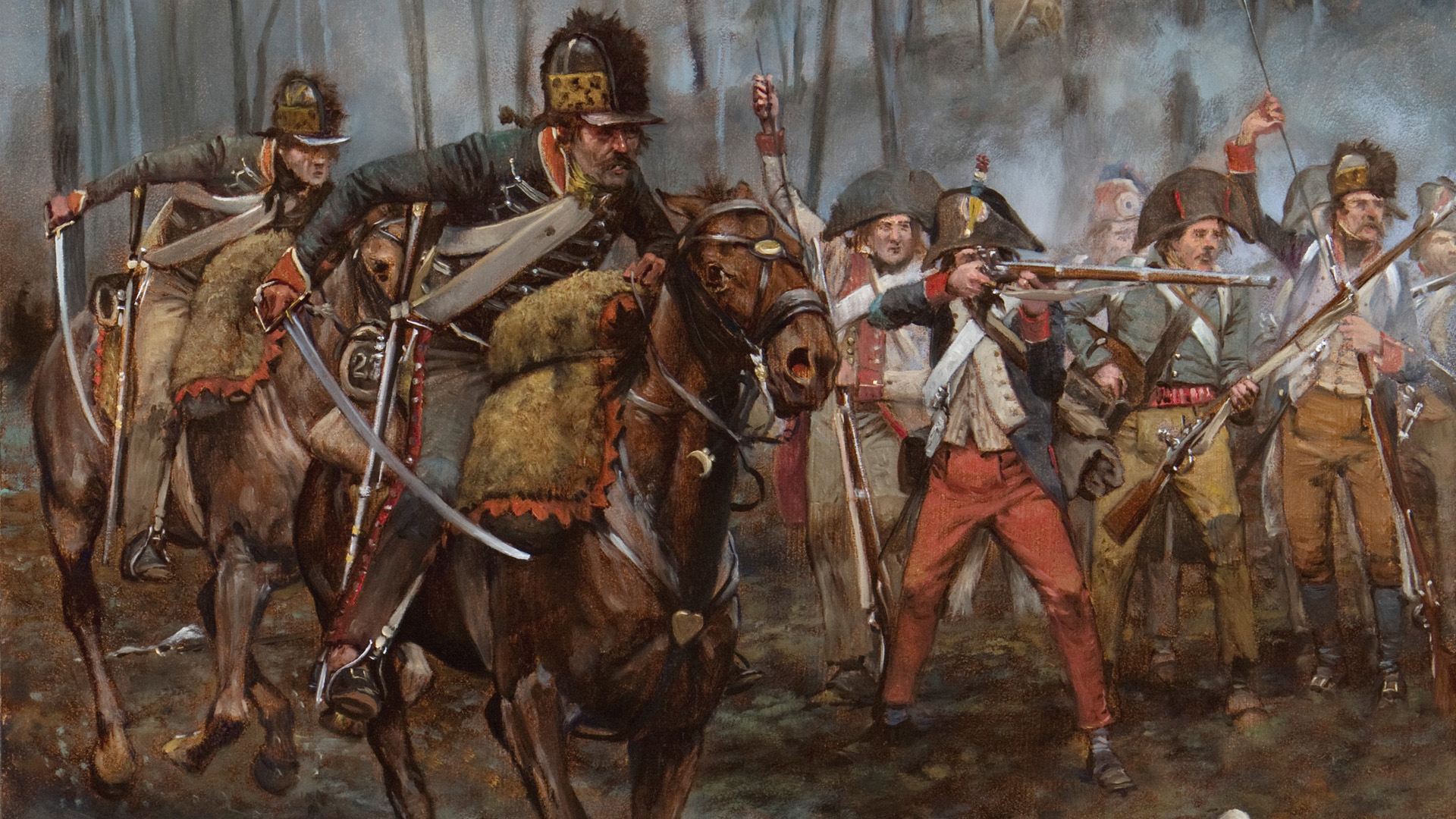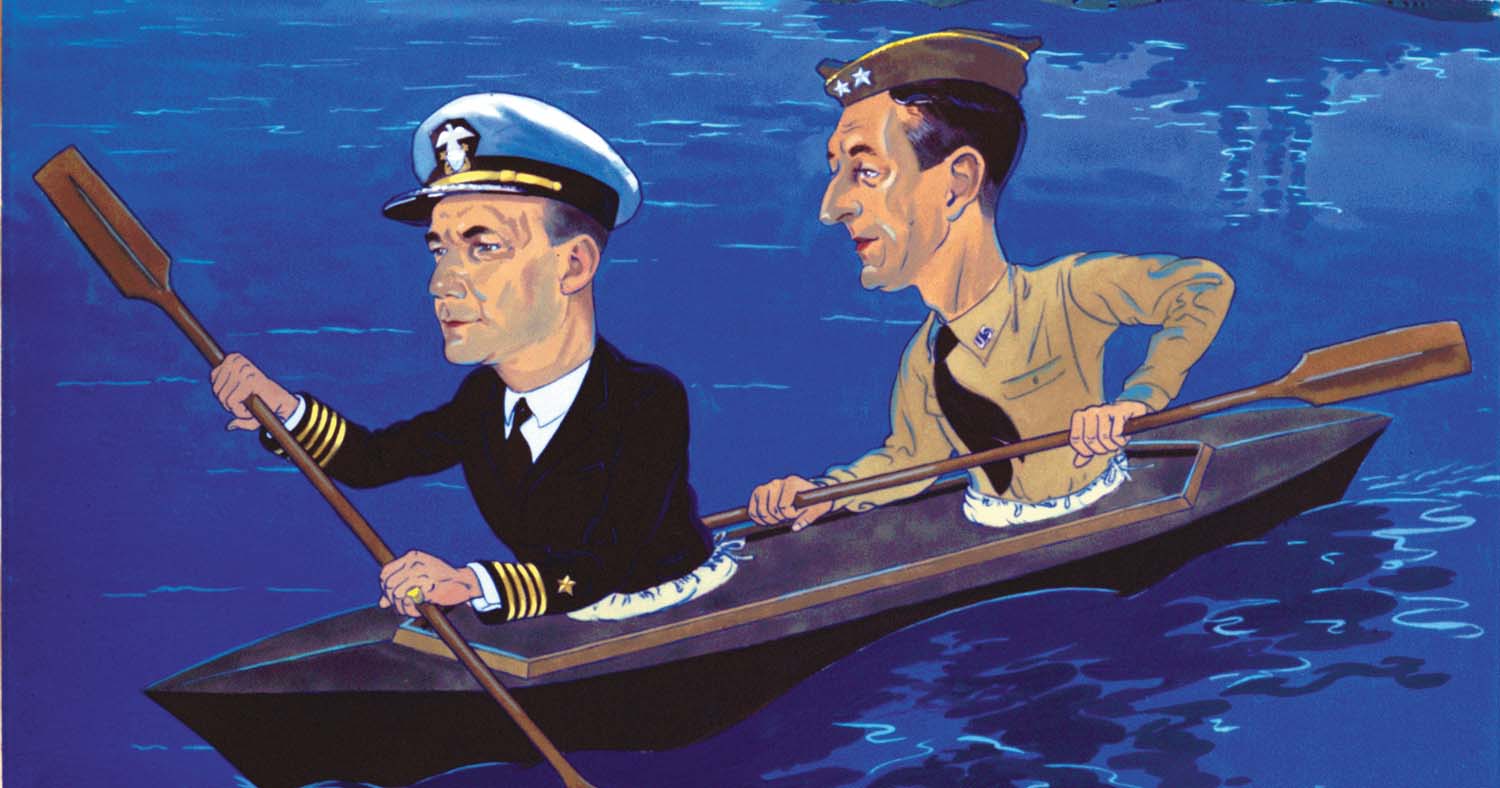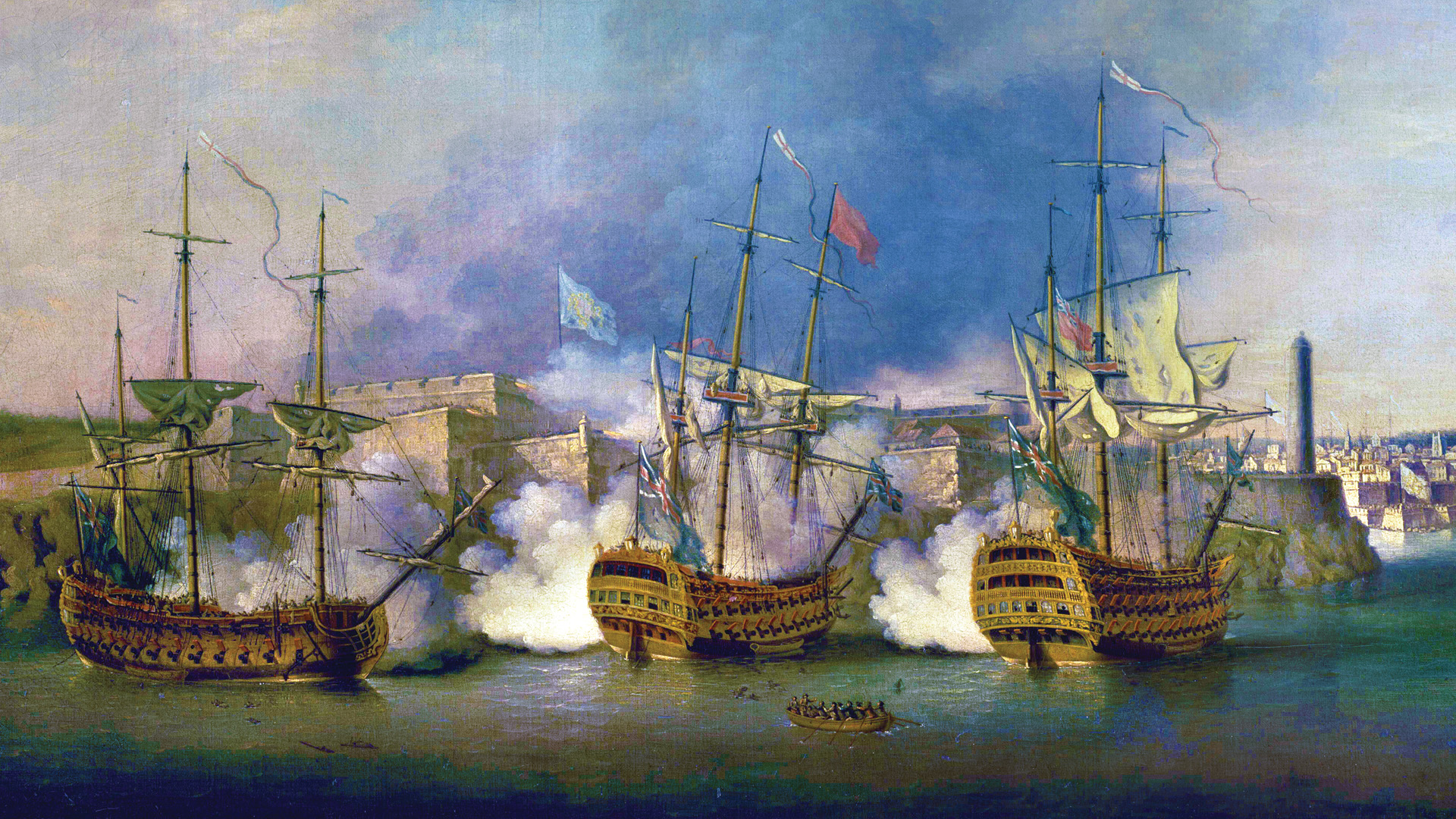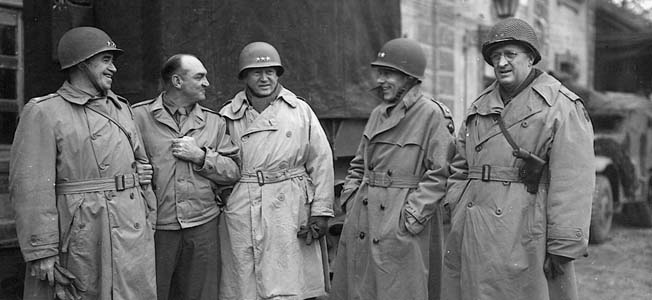By Michael D. Hull
Shortly after the Japanese sneak attack on Pearl Harbor on December 7, 1941, President Franklin D. Roosevelt remarked that he would like to bomb the enemy homeland in revenge as soon as possible. But the distance involved made it seem like wishful thinking, for there were no aircraft then in the U.S. arsenal with the range for undertaking such a mission. Then it occurred to Captain Francis B. Low, the operations officer on the staff of Admiral Ernest J. King, U.S. Navy commander in chief, that Army Air Force bombers could conceivably be launched from the deck of an aircraft carrier in the Pacific Ocean within range of Japan.
The idea intrigued King and AAF planners, and details were worked out by a joint Army-Navy team. Volunteers recruited for the so-called “First Special Aviation Project” were told nothing, except that they would be putting their lives on the line. It would be a one-way mission. Once the planes had left the carrier and dropped their loads on Japan, they would have to seek refuge in either China or Russia.
Twenty-four five-man crews were carefully picked, trained in handling North American B-25 Mitchell medium bombers, and sent to Eglin Air Base in Florida in March 1942. There, Navy pilots showed them how to take off from a patch of airstrip marked out as the width and 500-foot length of the flight deck of the carrier USS Hornet. The twin-engine B-25s were modified for the top secret strike against Japan by the removal of most of their armaments and with the loading of as many spare fuel tanks as they could safely hold.
Eventually, 16 Mitchells and crews were selected for the historic raid. On April 1, while their unchosen comrades looked on with envy, the 16 crews climbed aboard Hornetat the Alameda Naval Air Station in California. After breakfast the next day, the fliers gathered in an empty mess hall to learn the purpose of the mission from their leader. He was short, stocky, affable Lt. Col. James H. Doolittle, a former record-breaking aviator, mining engineer, instructor, oil company executive, and bantamweight boxer. Ironically, he had been born in Alameda.
“For the benefit of those who have not already been told or have been guessing,” he announced, “we are going to bomb Japan.” Thirteen B-25s, he said, would drop four bombs apiece on Tokyo, and three single planes would hit the cities of Nagoya, Osaka, and Kobe. “The Navy will get us in as close as possible and launch us off the deck,” said Doolittle. The raiders would not be able to return to the carrier, he added, but would overfly Japan and head for small landing fields in China. He asked if anyone wanted to back out. No one did.
The bombers were hoisted aboard Hornet and lashed to the flight deck. Two days later, the flattop, commanded by Captain Marc A. “Pete” Mitscher, sailed out underneath the Golden Gate Bridge escorted by two cruisers, four destroyers, and an oiler. The force headed westward into the Pacific. Less than five months after the Pearl Harbor attack, and with the loss of the Philippines, Wake Island, and Guam, American fortunes were at their lowest point. As envisioned by President Roosevelt, it was the ideal time to strike at the awakened republic’s enemy in the Far East.
On April 8, another task force steamed out of shattered Pearl Harbor and headed for a rendezvous with the Hornet group. Under the command of Vice Admiral William F. “Bull” Halsey, it was comprised of the carrier USS Enterprise, two cruisers, four destroyers, and an oiler. The two groups merged on April 13 into one formidable unit, Task Force 16, and moved directly toward Tokyo.
It had been planned to launch the B-25s from 400 miles off the enemy mainland at dusk, but a chance early-morning encounter on April 18 with a Japanese patrol boat, the Nitto Maru, forced Admiral Halsey to speed things up. He could not risk losing the priceless carriers to Japanese submarines or planes alerted by the boat’s radio. Salvos from the cruiser USS Nashville sank the boat, but the secret operation had been compromised. Halsey ordered the bombers to be launched. Doolittle’s crews were now committed to a daylight attack more than 600 miles from the target island of Honshu.
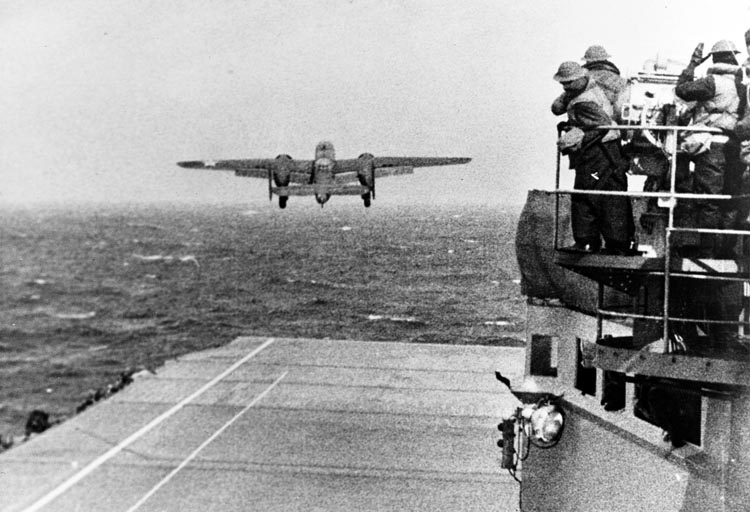
carrier USS Hornet during the opening moments of the famed Doolittle mission to bomb Tokyo.
As Hornet’s sailors cheered, Colonel Doolittle steered the first B-25 off the spray-soaked flight deck at 8:20 am on Saturday, April 18, 1942, followed by the others, one by one, in hair-raising takeoffs as the flattop churned through heavy seas. With throttles leaned out as far as possible, the bombers skipped low over the waves at 225 miles an hour under a threatening sky. They broke into the clear as the Japanese mainland came into view.
Doolittle led the B-25s on a contour chase over the fields of Honshu until they began the run-in for Tokyo. They then climbed to 1,200 feet for the bombing run. Each Mitchell carried three 500-pound general-purpose bombs and an incendiary cluster. Using a 20-cent “Mark Twain” bombing device (more accurate than the secret Norden bombsight for a low-level operation), Doolittle began dropping his incendiaries at 12:15 pm Tokyo time, followed by a plane piloted by Lieutenant Travis Hooper. Bombs were dropped on Tokyo, Nagoya, Kobe, and Yokohama. Lieutenant Edgar E. McElroy’s crews watched one of their 500-pounders hit the carrier Ryuho, dry-docked at Yokosuka, while other crews saw smoke billowing from factories, oil storage tanks, barracks, and other built-up areas.
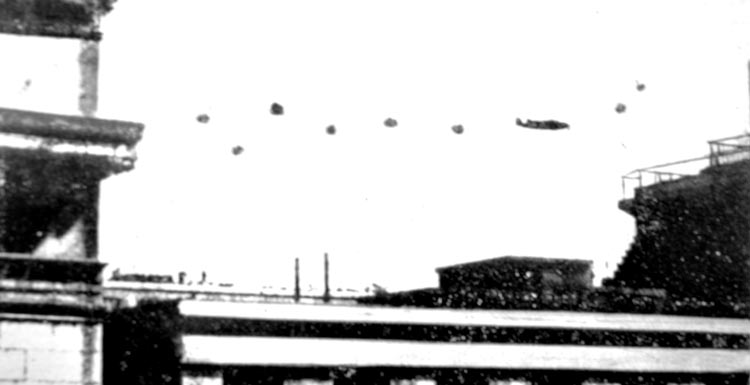
The Japanese were caught off guard. Except for people near the impact areas, the citizens in the Japanese capital assumed that the American attack was just a realistic climax to an earlier air raid drill. It was a warm, pleasant Saturday. Children in schoolyards and shoppers in the crowded streets waved at the passing B-25s, mistaking their red, white, and blue roundels for the rising sun insignia. The raiders, having dropped to rooftop level, swept over Emperor Hirohito’s moated palace, but nothing was dropped. Doolittle had issued explicit orders for the B-25 crews to avoid hitting the palace, hospitals, and schools.
Aided by a tailwind, the American planes, now widely dispersed, headed toward the Chinese mainland, aiming for the airfield at Chuchow. They reached the mainland, but could not make radio contact with Chuchow. It was now dark and almost 13 hours since they had left the Hornet, and the bombers were running out of fuel.
Unable to see the ground or contact any Chinese base, there was nothing for the B-25 crews to do but bail out and hope they were not over Japanese-held territory. Several of the bombers crash-landed, and others ditched off the coast, but Doolittle and 49 other fliers parachuted in the darkness.
Doolittle himself splashed into a Chinese rice paddy, glad to be alive, but anguished because he thought the mission had not been successful. “When you do a bombing mission, you like to bring your airplanes home,” he said later. “I had scattered mine all over different parts of China.” On the morning after he bailed out, the dejected colonel sat amid the wreckage of his plane on a mountainside and said to Sergeant Paul J. Leonard, one of his crewmen, “You know what’s going to happen? I’ll be put in Leavenworth Prison for having missed the mission.”
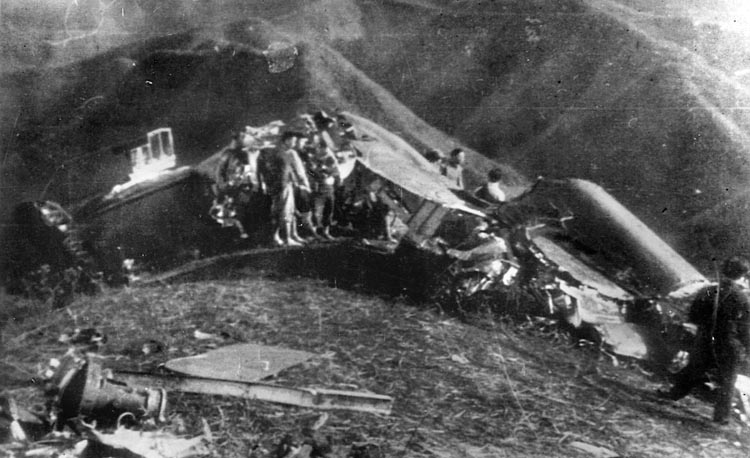
Only one man was killed during the Tokyo raid. A B-25 piloted by Captain Edward J. York landed safely north of Vladivostok, the only one to do so. The plane was impounded, and York and his crew were interned by the Russians. Three bombers went down in enemy-held areas of China, and eight American fliers were captured and interned in Tokyo. Three of them were beheaded, and another died in prison.
Eventually, when the facts were in, Colonel Doolittle was pleased to learn that his mission had not failed as he had feared. “The success of the raid exceeded our most optimistic expectations,” he was able to report. The damage inflicted by his B-25s was minimal, but it provided a much-needed lift for morale. “It was the first good news we [the Allies] had,” he said. “And for that reason, it was tremendously important. It was our first bold strike at Japan; it showed them we could do it.” Admiral Halsey called the Doolittle raid “one of the most courageous deeds in all military history.”
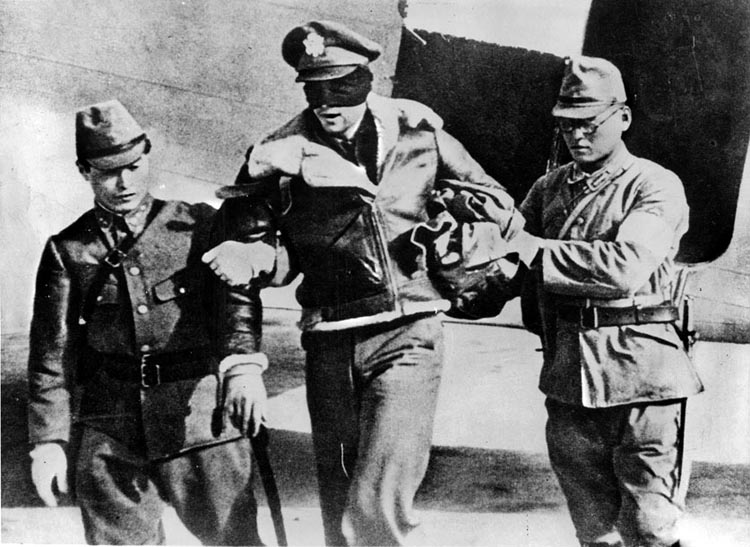
Radio Tokyo admitted on April 18 that Japan had been bombed by American planes, but there was no word from Washington. A month later, with dramatic suddenness, President Roosevelt announced that Doolittle had led the squadron that bombed Japan and presented him with the Medal of Honor. Far from winding up in Leavenworth, the gallant mission leader was a national war hero. FDR also awarded the Distinguished Service Cross to 79 other fliers who had participated.
James Harold Doolittle, the man who led America’s first offensive mission of World War II, was born on December 14, 1896, in Alameda to Frank H. and Rosa C. (Shepherd) Doolittle. When Jimmy was three years old, the family moved to Alaska. The boy grew up in Nome, a “rough and tumble” mining town. He was the smallest boy in his class at school but soon learned to take care of himself with his fists. When he was eight, the family returned to California.
Jimmy attended public schools in Los Angeles and studied at Los Angeles Manual Arts High School and the Los Angeles Junior College, from which he graduated in 1916. While in high school, he met tall Josephine E. Daniels, and they were married in 1917. The vigorous young man had won the high school boxing championship and decided he wanted to become a prizefighter.
But another interest took hold of Jimmy Doolittle that was to change his life. A visit to the 1910 International Air Meet at Dominguez Field near Los Angeles overthrew his thoughts of a possible career as a mining engineer. “The switch couldn’t have been more extreme—from under the earth to into the skies,” he recalled later. Jimmy spent several months carefully building a small hang-glider from mail-order plans. “When I got finished,” he said, “I carried it to the top of a cliff near my house, got a good grip, and threw myself off. Unfortunately, the tail section hit the edge. I came down straight, and the glider ended in a ball.”
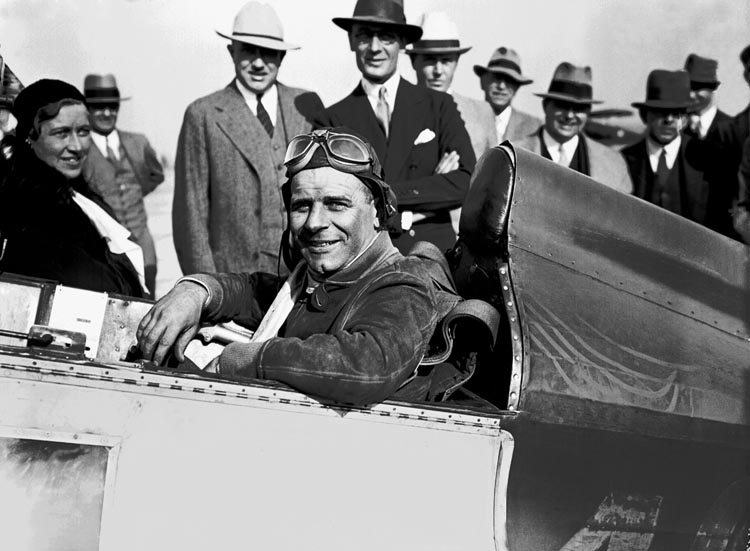
He was a versatile lad. Besides flying, he was interested in blacksmithing, woodworking, puttering around in school auto and machine shops, and taking part in model airplane contests. Eventually, he buckled down to hard study in mathematics, chemistry, physics, and English history.
When the United States entered World War I early in April 1917, young Doolittle was a senior at the University of California School of Mines. He enlisted as a flying cadet-private in the Army Signal Corps Reserve on October 6, 1917. After being assigned to the School of Military Aeronautics at the University of California, he went to Rockwell Field in California for further training. He showed enthusiasm and aptitude for aviation and was commissioned a second lieutenant in the Signal Corps Aviation Section in March 1918.
Doolittle was eager to go to France, where pilots of the fledgling U.S. Air Service were fighting with their French and British comrades in the skies over the Western Front. Doolittle got as far as Hoboken, New Jersey, a major embarkation point, but because of his confidence and skill with airplanes, his superior officers decided that he would provide greater service as an instructor. So, he had to content himself with being a flight and gunnery instructor at Camp Dick, Texas; Wright Field, Ohio; Gerstner Field, Louisiana; and Rockwell Field, California. Nonetheless, he chafed at the experience. World War I proved “a great disappointment” to the energetic, ambitious young aviation officer. “I was pretty upset,” he said. “While my students were going overseas and becoming heroes, I was having to stay home and make more heroes.”
In November 1918, two weeks after the end of the war, Doolittle made his debut as a stunt flier in a San Diego air show dedicated to the American aviators killed in France. He was a hot pilot by then, and it was said that the spectators never forgot his performance. In 1919, Doolittle was assigned to the 104th Aero Squadron at Kelly Field, Texas, and then to the 90th Aero Squadron at Eagle Pass, Texas, during which time he served on Mexican border patrol duty.
Living conditions were crude on such frontier outposts. When Mrs. Doolittle moved to Eagle Pass, her husband was the only married officer on the post. They were assigned living quarters but no furniture was available. So, the resourceful Doolittle built some furniture while his devoted Josephine learned to cook and bake with an “old cook stove and skeet wood, which, when green, leaves a lot to be desired as fuel.” Doolittle was commissioned a second lieutenant in the Regular Army Air Service on July 1, 1920, and promoted to first lieutenant on the same day. Two years later, he received a bachelor of arts degree from the University of California.
He then made the first of the many cross-country flights that brought him international fame. The Army had made two such one-day attempts that failed, and a pilot was killed. After an abortive takeoff from Jacksonville, Florida, Doolittle set off again in a De Havilland 4 from Paola Beach, Florida, at 10:03 pm on September 4, 1922. He landed to refuel at Kelly Field, Texas, and wearily touched down in San Diego 21 hours, 19 minutes after leaving Florida. He was awarded the Distinguished Flying Cross for his “skill, endurance, and resourcefulness.”
In 1923, Doolittle entered the prestigious Massachusetts Institute of Technology program for special engineering studies. He received a master of science degree the following year and a doctorate of science in 1925. That year, he trained in flying high-speed seaplanes and competed in the famed Schneider Trophy races. Piloting a borrowed Navy Curtiss R3C2 floatplane, he flew at an average speed of 232 miles per hour against other U.S., British, and Italian pilots and won.
Granted a leave of absence from the Army in 1926, Doolittle went to South America for some demonstration flights. He broke both ankles in Chile but nevertheless continued to fly with his ankles in casts. After he had healed, he made an experimental flight to South America arranged by the Navy and the State and Commerce Departments. That same year, he completed a cross-country flight from New York to San Francisco. He also was the first man to fly an outside loop. Doolittle was by now a well-known name in American aviation.
The pioneer worked on the improvement of aircraft instruments with the Guggenheim Fund for the Promotion of Aeronautics at Mitchel Field, Long Island, in New York. He made dozens of flights, tested new systems, and developed basic procedures for flying “blind” (on instruments alone). On the foggy morning of September 24, 1929, Doolittle took off from Mitchel Field in the hooded cockpit of a Consolidated NY-2 biplane accompanied by Army Lieutenant Benjamin Kelsey as his safety pilot. Doolittle took off, flew 20 miles, and landed, using instruments alone and unable to see outside the cockpit. It was an unprecedented feat in aviation, heralding the end of seat-of-the-pants flying. The next day’s edition of the New York Times declared, “Aviation has perhaps taken its greatest single step in safety.”
In 1930, at the age of 34, Doolittle resigned his commission in the Regular Army. Commissioned as a major in the Officer Reserve Corps, he made several more experimental flights and was awarded the coveted Harmon Trophy. He was hired by Shell Oil Company to manage its aviation department, where he helped to develop aviation fuels. But he maintained his Army connections.
He made another epochal coast-to-coast flight—averaging 225 miles per hour—in 1931, winning the Bendix Trophy. The following year, the irrepressible Doolittle won the Thompson Trophy race in Cleveland, Ohio, while piloting a stubby, 800-horsepower Gee Bee Super Sportster. With an average speed of 252.68 miles per hour, he set a world speed record for land planes. He retired from air racing in 1933, commenting, “I have yet to hear of anyone engaged in this work dying of old age.” He joined the Army Board in 1934 to study Air Corps organization and was elected president of the Institute of Aeronautical Sciences in January 1940. That July, with Europe at war and America starting to mobilize, Doolittle was ordered to active duty as a major in the Army Air Corps.
Finally, he got the chance to experience what he had missed in 1917: war. His first assignment was an all-air tour of British battlefronts in Europe and Asia as part of a mission led by Lt. Gen. George H. Brett. On January 2, 1942, Doolittle was promoted to temporary lieutenant colonel, and the following week he was assigned to the Washington headquarters of the Army Air Forces. That June, following the famous Tokyo raid, he was awarded the Guggenheim Medal for his “outstanding contributions to the aeronautical sciences.”
Doolittle then headed back to Europe to play a key role in the Anglo-American air offensive against Nazi Germany. Soon after arriving in London on August 17, 1942, the day of the first all-American bomber raid on enemy-occupied Europe, he started organizing the U.S. Twelfth Air Force. Promoted to temporary major general, he commanded the Twelfth Air Force during Operation Torch, the Allied invasion of North Africa in November 1942. Based in Algeria, his bombers and fighters pounded Axis supply dumps, communications lines, and airfields as U.S. forces and the British Eighth Army pushed the German and Italian Armies into Tunisia and eventual capitulation.
As with everything else he had attempted, General Doolittle threw himself into his duties in the North African campaign with proven ability and vigor. He was “the little man who is everywhere,” said one USAAF officer. He was the only American general there without an aide, left office chores to his staff, and ranged hundreds of miles around the war zone in a Boeing B-17 Flying Fortress heavy bomber. He kept a couple of bombs in its bay “just in case he should see something to drop them on,” as one fellow officer reported. A major on Doolittle’s staff said, “I wish the general would stay put long enough for me to talk to him. If he’s here, he never stands still, but paces all over the place, and I have to talk and run at the same time. If I turn my back, he’s off to Oran or Algiers or Casablanca or somewhere else before I can get hold of him.”
Doolittle went on to lead the strategic arm of the Allied Northwest Africa Air Force under General Carl Spaatz in March-November 1943, and the Fifteenth Air Force, the strategic arm of the Allied Mediterranean Air Forces based at Foggia, Italy, from November 1943 until January 1944. Doolittle then went to England to command the powerful Eighth Air Force until the end of the European war. He was promoted to temporary lieutenant general in March 1944.
Arriving in England in January 1944, Doolittle’s no-nonsense approach made itself felt immediately. He perceived that the American bombers were playing a supporting role in a final showdown between the Allied air forces and the German Luftwaffe and was not happy with a sign he saw hanging on the wall in his fighter commander’s office. It read, “The first duty of the Eighth Air Force fighters is to bring the bombers back alive.” Doolittle ordered it taken down, and a new sign was hung. It read, “The first duty of the Eighth Air Force fighters is to destroy German fighters.”
The next five months brought the aerial war of attrition to a climax. Doolittle ordered his P-51, P-38, and P-47 fighter crews to start flying more aggressively, breaking away from the B-17 and B-24 formations and chasing the enemy whenever he showed himself. German fighter losses then mounted: 30 percent in January 1944, 30 percent in February, and 56 percent in March. By that June, 2,262 enemy fighter pilots had been killed or otherwise put out of action, an attrition rate of almost 100 percent.
When air operations ended in Europe in mid-1945, Doolittle moved with the Eighth Air Force to Okinawa. In May 1946, he returned to reserve status and rejoined Shell Oil Company as a vice president and director. He also held a number of civil and military aeronautics posts and retired from both the Air Force and Shell Oil in 1959.
The energetic, good-natured warrior spent his retirement with his beloved Josephine in a cluttered, hillside home in Carmel Valley, California, where he read voraciously and undertook occasional carpentry projects. He attended functions and gave speeches into his 80s. Although Doolittle abstained from tobacco and alcohol, a friend observed that he made his after-dinner speeches “highlights of hilarity.”
Though he had gained fame as a longtime aerial daredevil and heroic combat leader, General Doolittle stated that nothing in his life gave him more satisfaction than peace. “The happiest I’ve ever been was when I heard the war was over and knew I’d done everything I could to end it,” he said. His career had spanned the birth of aviation to the space program. “When I was younger, I would have wanted to go to the moon myself,” he said. “But now, I just want to admire it from the earth.” He died on September 27, 1993, at the age of 96.
